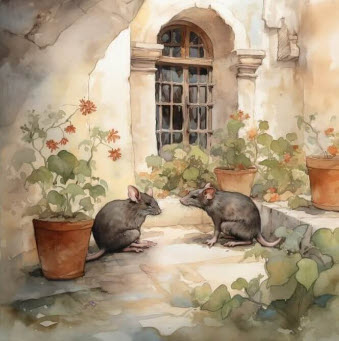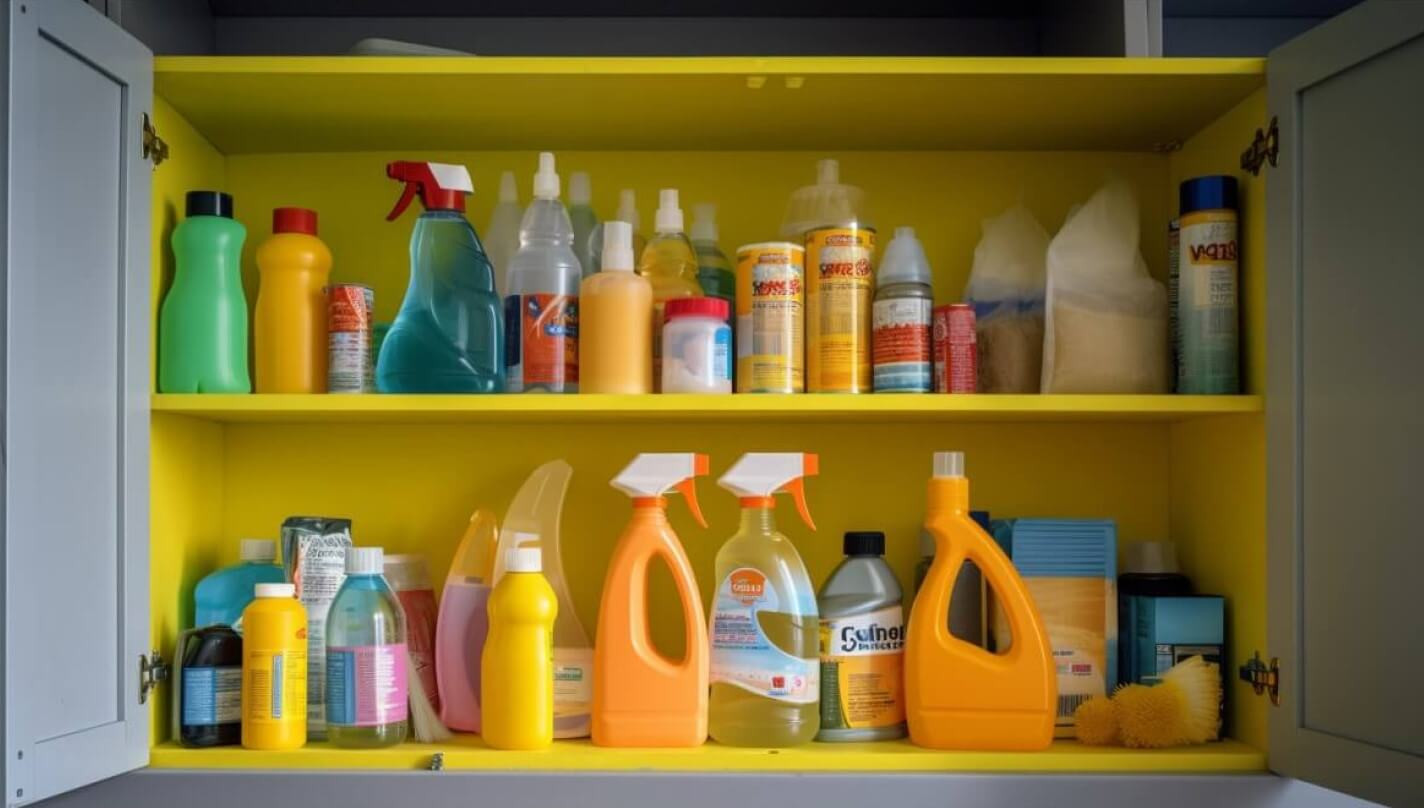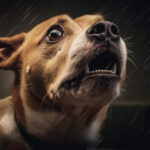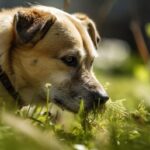Introduction
In order to protect your pet from potential chemical hazards, use pet-safe products such as natural and organic cleaning products and properly store and dispose of all chemicals.
Table of Contents
Keep your pet away from areas where household chemicals are in use, and you must not leave any containers of chemicals or cleaning products out in the open. Furthermore, keeping pets away from open windows or other areas where fumes can enter the home is often overlooked. You need to consult with a veterinarian immediately if you have any concerns about your pet's safety concerning household chemicals and cleaning products.

Inhalation of Chemical Fumes
In addition to chemical burns, pets can suffer from respiratory problems due to inhaling household chemicals. These chemicals can cause inflammation and scarring of the lungs, resulting in difficulty breathing and increased mucus production. Furthermore, some substances may cause vomiting and diarrhoea, leading to dehydration and electrolyte imbalance. Pets may also experience neurological issues, such as seizures, due to exposure to certain chemicals.
Keep all household chemicals out of the reach of pets, including pet-safe ones. If anything is consumed in quantity, it will cause harm. If you do use a chemical cleaner, be sure to use it in a well-ventilated area and take steps to ensure that your pet is not exposed to the fumes. Additionally, please read the safety instructions on the label of any product you use and follow them closely. Pet owners should also be aware of potential dangers in the yard, such as antifreeze, insecticides, and fertilisers, which can all be hazardous to pets.
Secondary Poisoning
In addition to the direct toxicity of these products, pets can suffer from secondary poisoning if they eat a poisoned rodent or insect that has been exposed to a pesticide or insecticide. Pets can also be exposed to the chemicals through inhalation, which can cause coughing, sneezing, respiratory distress, and other symptoms.
Warning!!!
We speak first-hand about the dangers of chemicals, pesticides etc. We lived in Spain for many years with our 3 dogs.
Unbeknown to us, the neighbour had put rat poison alongside our side of the fence between our gardens, apparently to prevent any rats from entering her garden (although we had an immaculate plot, she was terrified of rats). Unbeknownst to us, Marty, our mongrel dog, had decided to eat some of the tasty-looking poison.
When we were sitting watching television in the evening, Marty started to sneeze blood. In fact, he did not stop sneezing, and there was blood all over the walls and floor. We rushed him to the vet, not knowing what had caused it (until later). It was touch and go for a long while.
To cut a long story short, it took 3 weeks and several thousand euros, but Marty eventually recovered.

Poppet and the Slug Pellets
Our other dog Poppet decided to snaffle slug pellets that my son-in-law has scattered on the veg plot, which we were not aware of - and again, this involved a visit and several nights' stay at the vet.
It sounds like we were bad at looking after our animals! On the contrary, we were always very careful when out walking and with their feeding routines, vaccinations etc. (we were always back and forth to the UK with them). Both circumstances only revealed themselves when we investigated and which came to light after the incidents had taken place.
So it just shows how careful you need to be and how vigilant you have to be - especially when others play a part you are unaware of. For instance, if your partner is a gardener, tactfully make them aware of the dangers of slug pellets, rat poisons, etc.
Pesticides etc.
Apart from storing chemicals out of reach of pets, keep pets away from areas recently treated with pesticides or insecticides. Pet owners should also check pet food and treats for pesticide residue and be sure to read the instructions on pesticide and insecticide labels carefully before using them. If a pet is exposed to any of these toxins, it should be taken to a veterinarian immediately.

Pet owners should also be aware of potential outdoor hazards such as antifreeze, rat or snail bait, and other poisonous substances that can be found in gardens, driveways, and other outdoor areas. If these substances are present, pet owners should take proactive steps to remove them and/or keep pets away from them. Additionally, pet owners should check for holes or other entry points in fences, as pets can easily escape and encounter hazardous materials.
Toxic Plants
Finally, pet owners should be aware of the potential for household plants to be toxic to pets. If a pet ingests a poisonous plant, it should be taken to a veterinarian immediately. In addition, to protect pets from accidental ingestion of harmful chemicals, pet owners should remove any hazardous plants from the home or keep them in an inaccessible area.
See our article on 12 Toxic Plants for Cats
In addition to educating pet owners about the potential dangers of household chemicals, sprays, and cleaning products, pet owners should be aware of the possible signs of toxicity in their pets. Symptoms of toxicity in pets can include vomiting, diarrhoea, lethargy, difficulty breathing, and seizures. If any of these signs are present, pet owners should seek immediate medical attention for their pets.
Additionally, pet owners should be familiar with the labels of their products and always read the directions and safety warnings before using them. The manufacturers of chemicals should put warnings on the labels.
Finally, pet owners should never use products that are labelled as potentially toxic to pets. By following these safety tips, pet owners can help to protect their pets from the effects of household chemicals, sprays, and cleaning products.
IMPORTANT
Do you wash your kitchen floor, etc.? Do you use any chemicals in the water? your dog or cat will walk on those beautifully washed floors, and then lick their paws...
Help support the PDSA with a monthly donation
If you require any assistance with this article, please do not hesitate to Contact Us




















